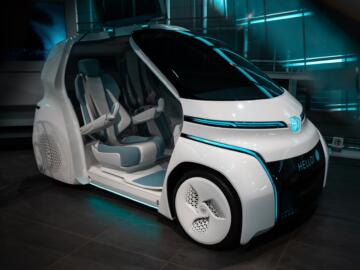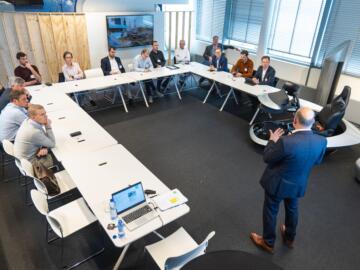Imagine a world where transportation takes to the skies, effortlessly bypassing traffic jams and transforming the way we move. Advanced Air Mobility is unlocking a new dimension of speed, efficiency, and convenience.
Advanced Air Mobility explained
AAM represents a paradigm shift in mobility, taking transportation to the third dimension – the air. This transformation is made possible by advancements in technology, including innovations in autonomous automobiles and other types of air vehicles. By enhancing the capabilities of drones and helicopters in terms of intelligence, speed, autonomy, and efficient take-off and landing, AAM offers the potential to connect city destinations directly, rapidly, and safely.
While drones are already widely used for various purposes such as inspection and photography, their operations are typically confined to defined areas with limited or no population. AAM, on the other hand, envisions the integration of air transport into urban environments. Moreover, AAM has tremendous potential in remote and hard-to-reach areas, such as those found in Africa, where it can provide vital support and infrastructure.
The market potential for AAM is staggering, with estimates suggesting a value of 240 trillion euros globally by 2035. Forecasts for the first unmanned passenger flights vary, but according to a report by ResearchAndMarkets.com, the concept of an "air subway" could become a viable market by 2028 as an addition to traditional public transportation systems like subways and buses. In fact, a study by Roland Berger speculates that by 2050, there could be as many as 100,000 passenger drones in use worldwide.
The elements of the Advanced Air Mobility ecosystem
To transform AAM into a large-scale reality, a comprehensive and multi-layered ecosystem is essential. Some key players within this ecosystem:
- Drone manufacturers, partners, and suppliers
- Drone service providers
- Drone service users (demand side)
- Drone operators
- Air Traffic Management
- Certification and Airworthiness
- Technology Providers and Platforms
- Research
- Smart Cities
- Vertiport/Infrastructure

Transformation of urban transportation
Advanced Air Mobility has the potential to transform urban transportation, connecting cities in a fast, direct, and safe manner. With a thriving ecosystem of stakeholders, including drone manufacturers, technology providers, smart cities, and regulatory bodies, the vision of AAM becoming a widespread reality is within reach. As we embrace the possibilities offered by AAM, we can look forward to a future where mobility is taken to new heights.
TomorrowLab stays abreast of these developments and we explain them through Early Warning Systems. We build connections with interesting parties abroad to make the future tangible and discussable, paving the way for new collaborations and partnerships. In the next phase, we engage various stakeholders and ecosystems in our innovation missions, leading to concrete projects. Our role? Facilitating conversations and partnerships.
As we soar into the future of transportation with Advanced Air Mobility, we embrace innovation and collaboration to make this visionary concept a reality. Together, we can elevate mobility to new heights, shape the cities of tomorrow, and create a more connected and efficient world.
Join us on this thrilling journey towards a smarter, airborne future – the sky's the limit!

How can AI be effectively integrated in the work process?
Embracing AI tools can elevate our professional capabilities and boost efficiency and productivity. However, mastering these tools takes time, commitment, and a willingness to experiment and learn through trial and error. Here are some practical tips & tricks to kickstart your AI journey.

Navigating the first stress-test of scenario planning
Last week, I had the privilege of taking another enlightening journey through the realm of scenario planning and future strategy with a group of high-flyers from different disciplines. It was the first time this group subjected their carefully prepared scenarios to a stress test. This moment, brimming with a delightful mix of joy, anticipation, and a touch of nervousness, was a milestone for all involved.

The future of mobility and how it can impact you
The way we think about and organise mobility is dramatically changing. Over the past decades, transportation and urban development have been centred around owning a combustion engine vehicle and driver comfort. Today, policymakers, technology developers, manufacturers, and urban planners are increasingly focusing on smart mobility. Various modes of transportation, urban redesign, and changing business models seek to integrate sustainability, safety and efficiency in smart mobility.

Mastering Change Management
Change is a constant within the realm of innovation. Navigating your team, organisation and stakeholders throughout the development or implementation of new products or services, a new process approach or a new organisational structure. It often creates resistance for multiple reasons. There's no quick fix in helping people throughout this change, but with the help of these 5 pivotal questions, you can embark on crafting a comprehensive change strategy.

